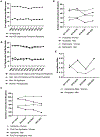Examining the First Peer-to-Peer Mentorship Program (F1Doctors) for International Medical Students
- PMID: 36405890
- PMCID: PMC9673072
Examining the First Peer-to-Peer Mentorship Program (F1Doctors) for International Medical Students
Abstract
In this study, we report international medical students in the United States and conduct an analysis of the first, peer-to-peer, national mentorship program for international medical students and international pre-med applicants in the US (F1Doctors). We used analyzed survey data collected through F1Doctors and the Association of American Medical Colleges yearly matriculation reports. Results indicated that the average college grade point average (GPA) and Medical College Admission Test score (MCAT) of international applicants was higher than that of all applicants. Additionally, non-US applicants reported facing numerous unique challenges such as limited access to extracurricular opportunities and difficulty finding mentors who are familiar with the application process. International applicants have the potential to increase the diversity of healthcare professionals, and F1Doctors is the first platform to support international healthcare applicants in the US.
Keywords: F1Doctors; GPA; International applicants; MCAT; challenges; health professional school; medical school.
Figures






Similar articles
-
Association of applicant demographic factors with medical school acceptance.BMC Med Educ. 2023 Dec 14;23(1):960. doi: 10.1186/s12909-023-04897-8. BMC Med Educ. 2023. PMID: 38098006 Free PMC article.
-
Medical Student Mentorship for Undergraduate Students Underrepresented in Medicine Improves Confidence and Knowledge About Medical School Application.Cureus. 2024 Jun 28;16(6):e63366. doi: 10.7759/cureus.63366. eCollection 2024 Jun. Cureus. 2024. PMID: 39070352 Free PMC article.
-
Association of MCAT scores obtained with standard vs extra administration time with medical school admission, medical student performance, and time to graduation.JAMA. 2015 Jun 9;313(22):2253-62. doi: 10.1001/jama.2015.5511. JAMA. 2015. PMID: 26057286
-
Factors Associated with Acceptance of Repeat MCAT Test Takers into a West Virginian Allopathic Medical School.South Med J. 2021 Dec;114(12):801-806. doi: 10.14423/SMJ.0000000000001331. South Med J. 2021. PMID: 34853858 Free PMC article.
-
Factors and barriers that influence the matriculation of underrepresented students in medicine.Front Psychol. 2023 May 25;14:1141045. doi: 10.3389/fpsyg.2023.1141045. eCollection 2023. Front Psychol. 2023. PMID: 37303920 Free PMC article. Review.
Cited by
-
International students in United States allopathic medical education: a mixed-methods analysis of institutional policies.Med Educ Online. 2025 Dec;30(1):2471433. doi: 10.1080/10872981.2025.2471433. Epub 2025 Mar 7. Med Educ Online. 2025. PMID: 40052508 Free PMC article.
References
-
- American Association of Colleges of Osteopathic Medicine. (2022). International students. Choose DO. https://choosedo.org/international-students/
-
- American Medical Association. (2022). International Medical Graduates (IMG) toolkit: Types of visas & FAQs (n.d.). https://www.ama-assn.org/education/international-medical-education/inter...
-
- Aspiring Docs. (n.d.). Applying to medical school as an international applicant. https://students-residents.aamc.org/applying-medical-school/applying-med...
-
- Association of American Medical Colleges (2020). FACTS. AAMC. https://www.aamc.org/data-reports/students-residents/interactive-data/20...
Grants and funding
LinkOut - more resources
Full Text Sources
